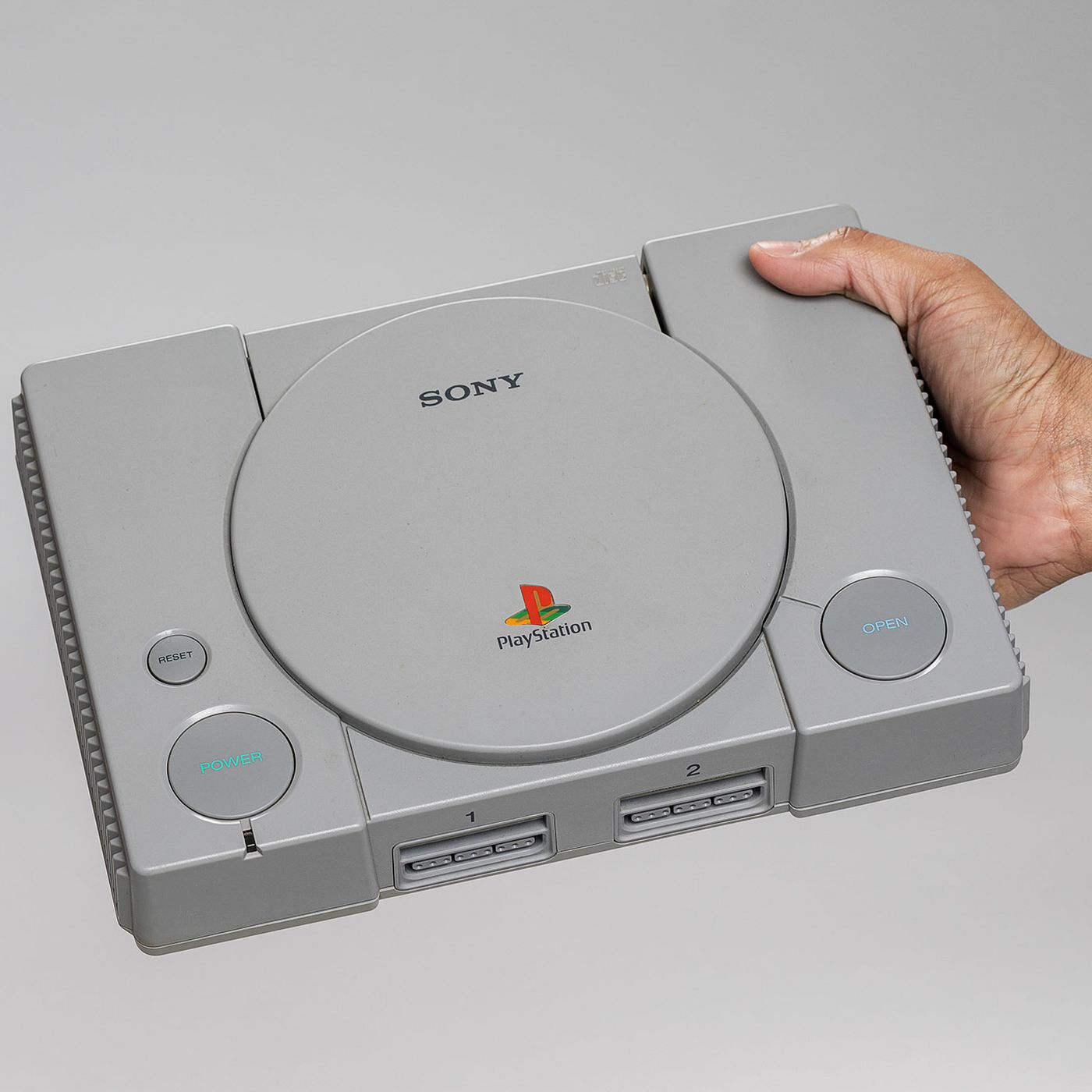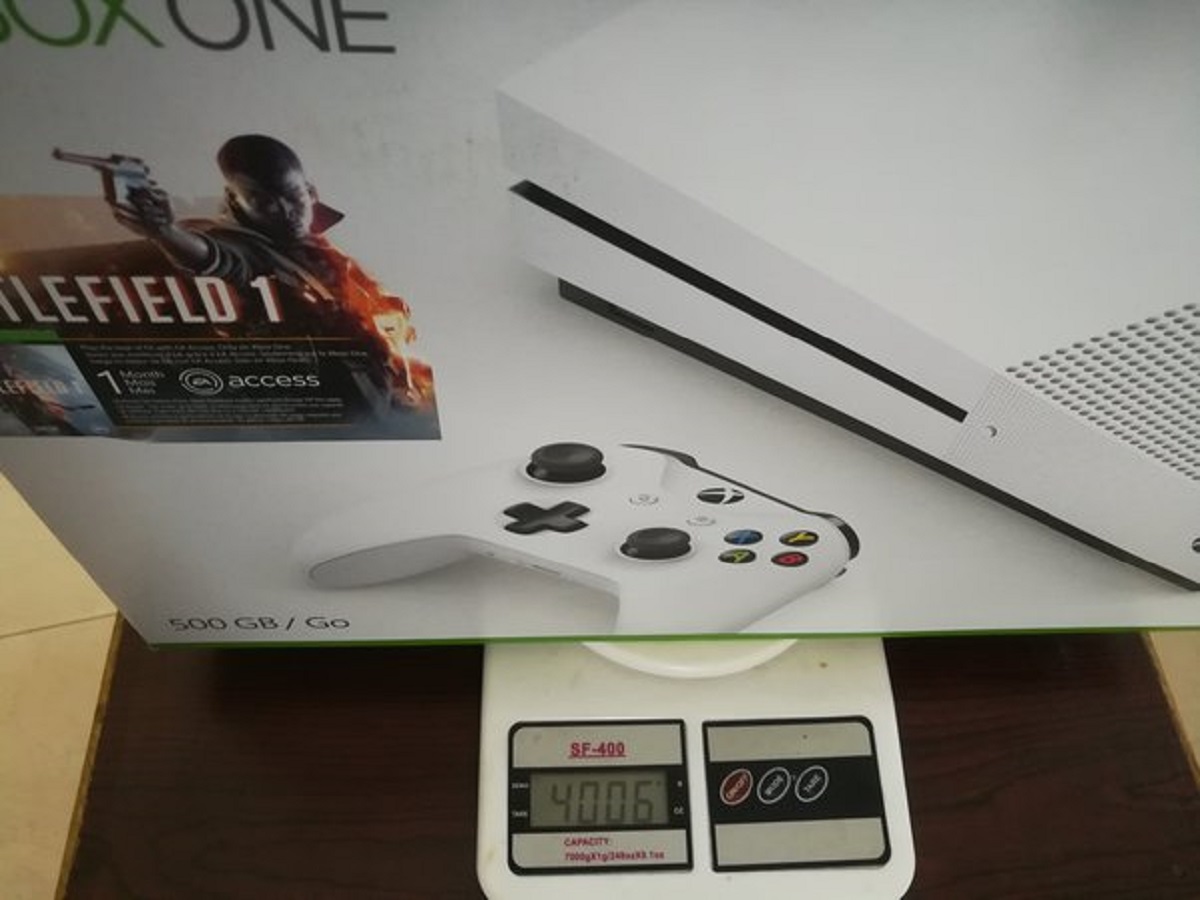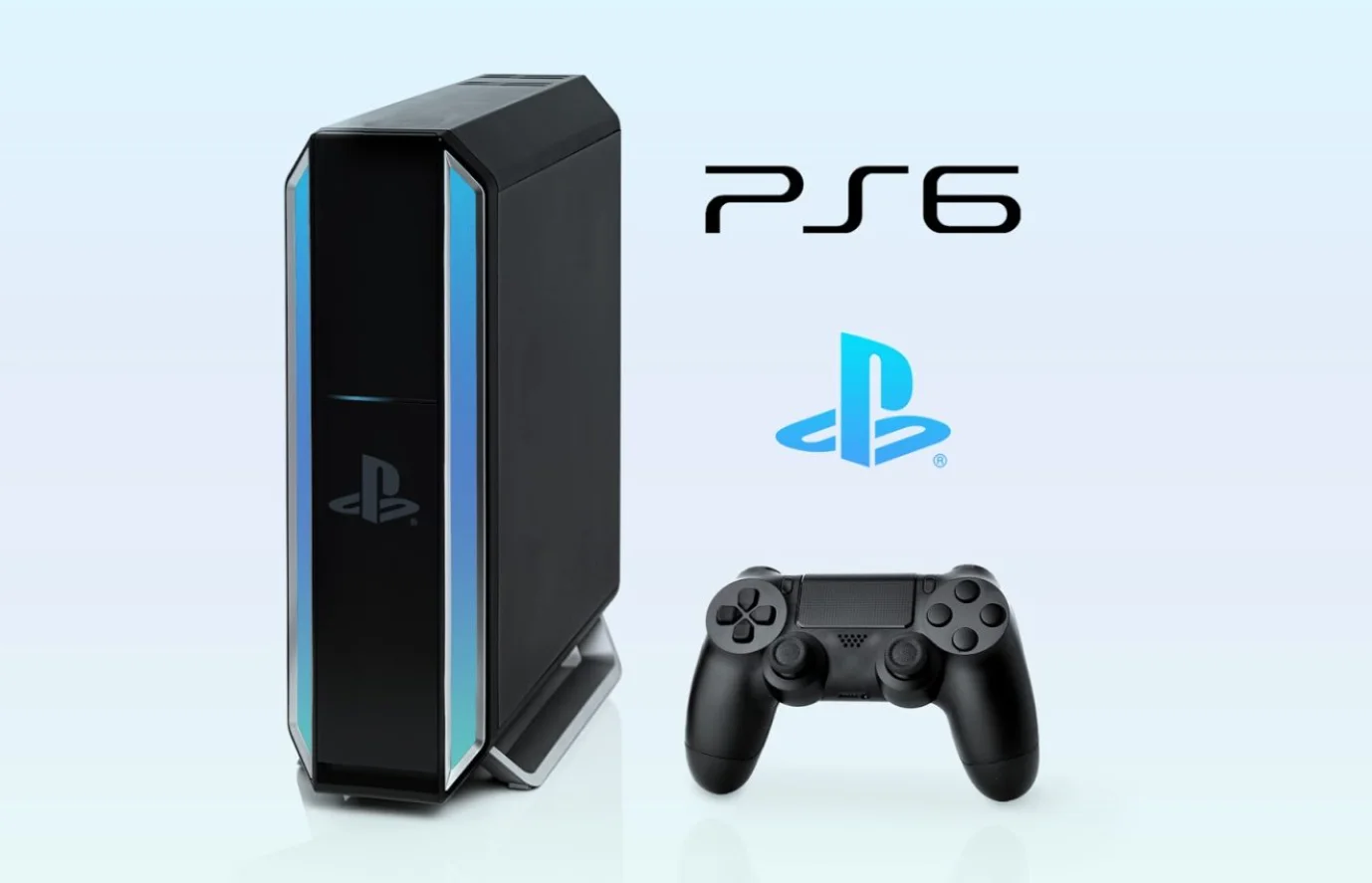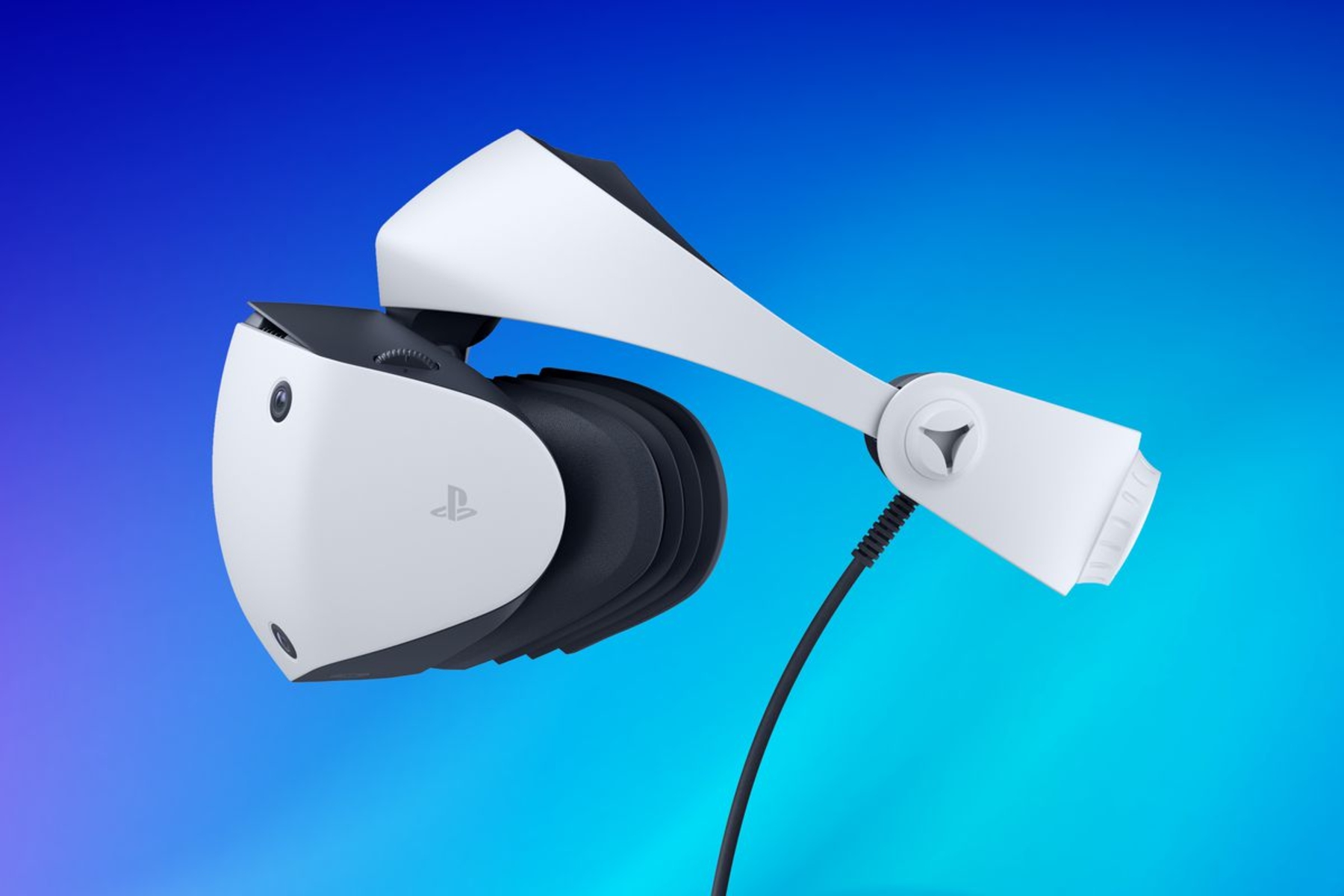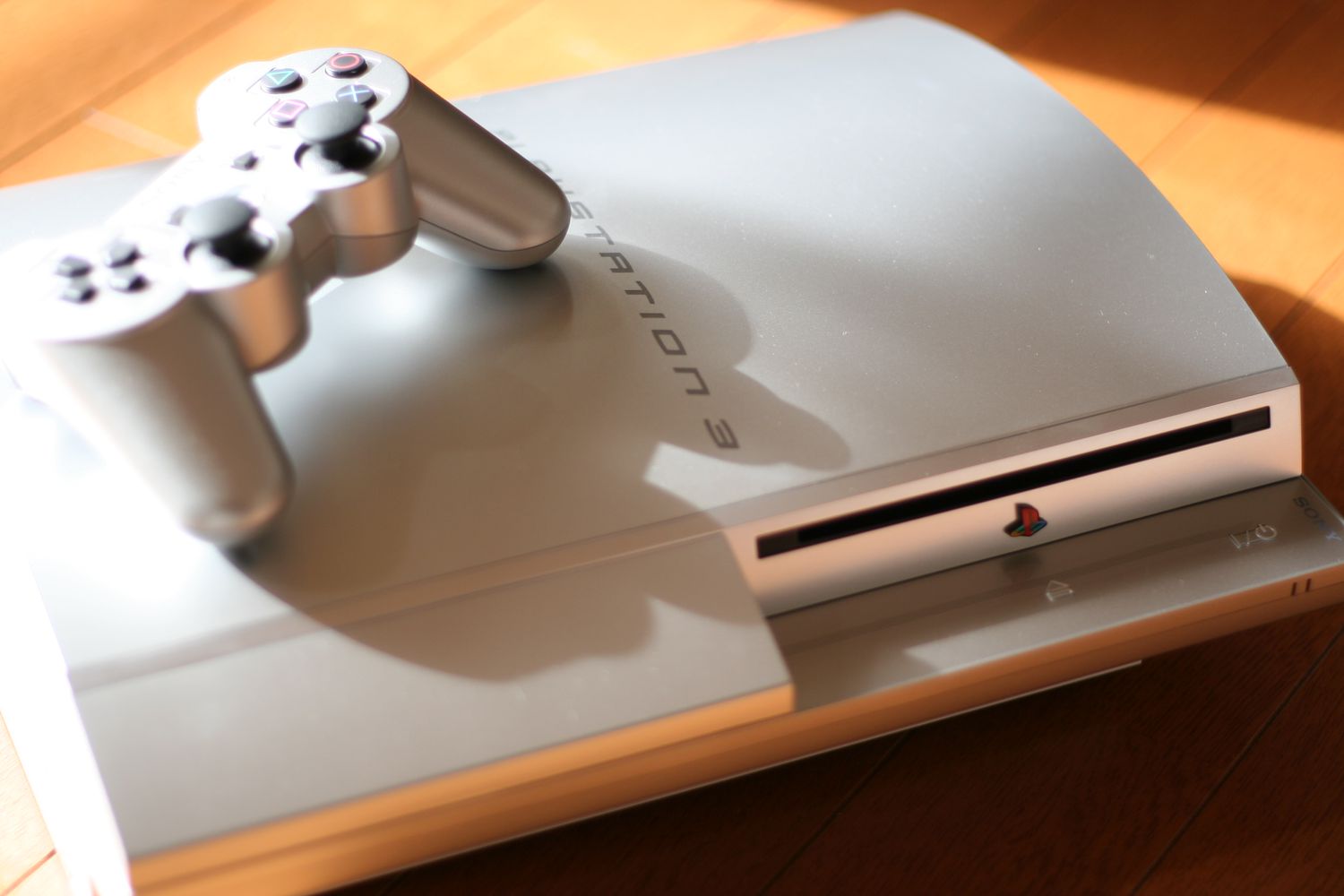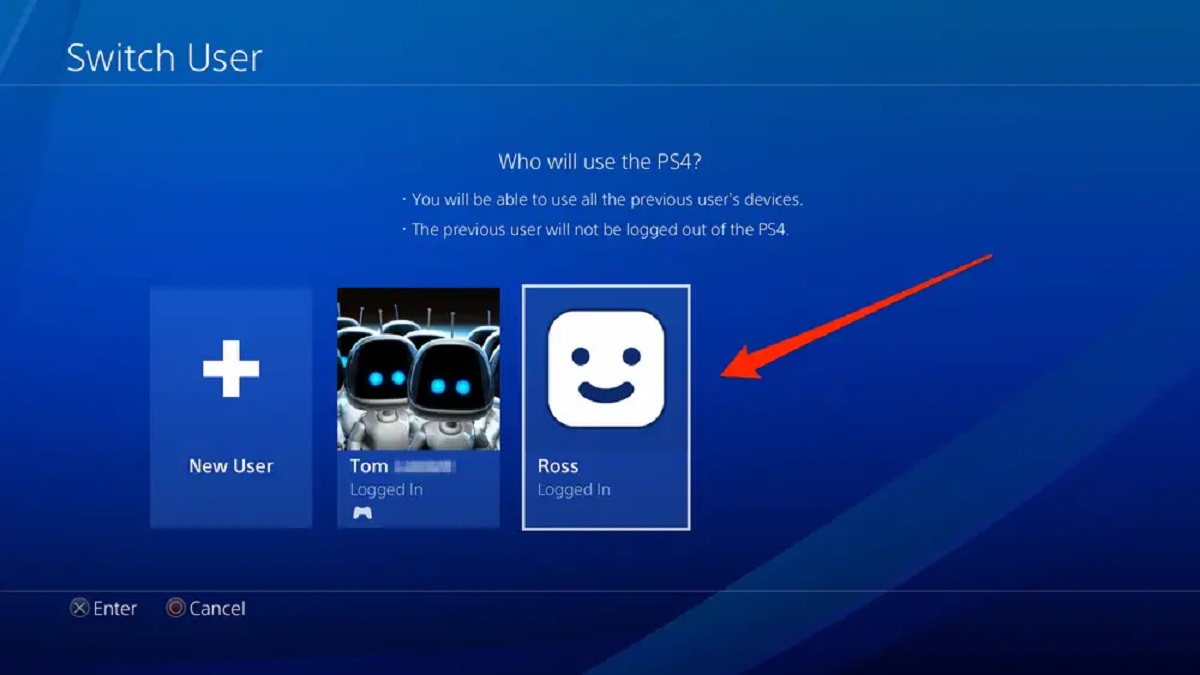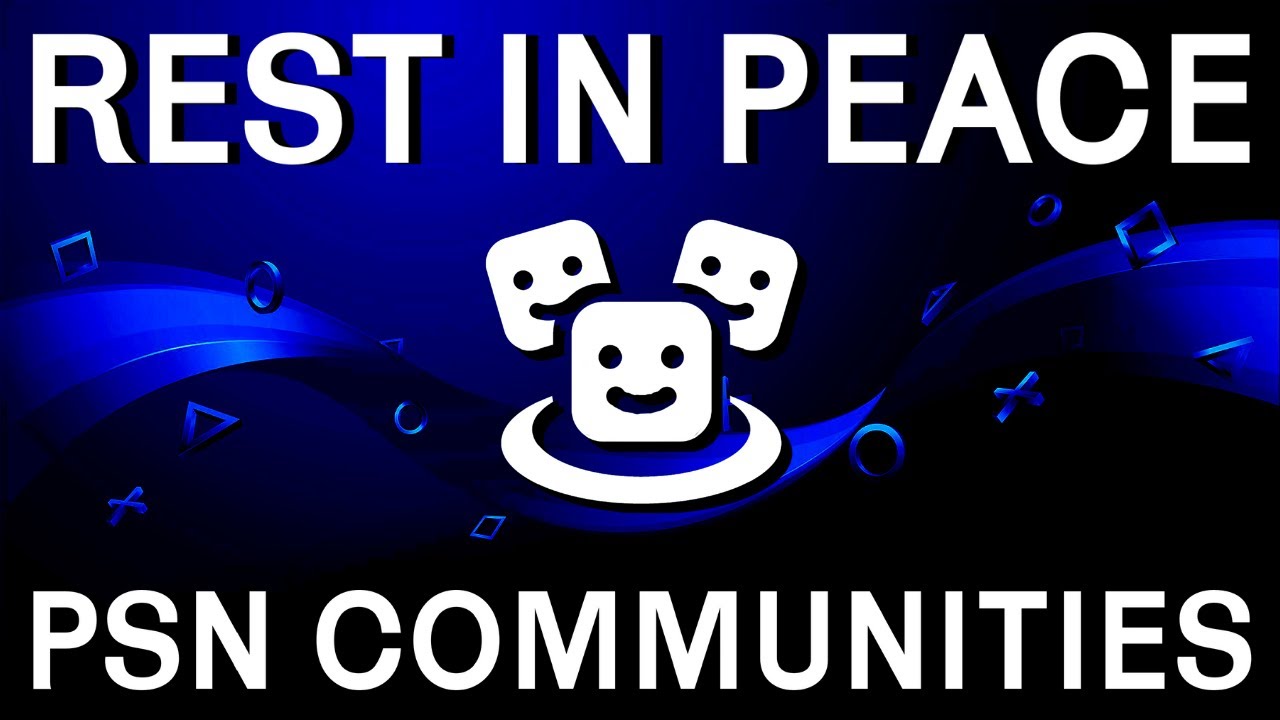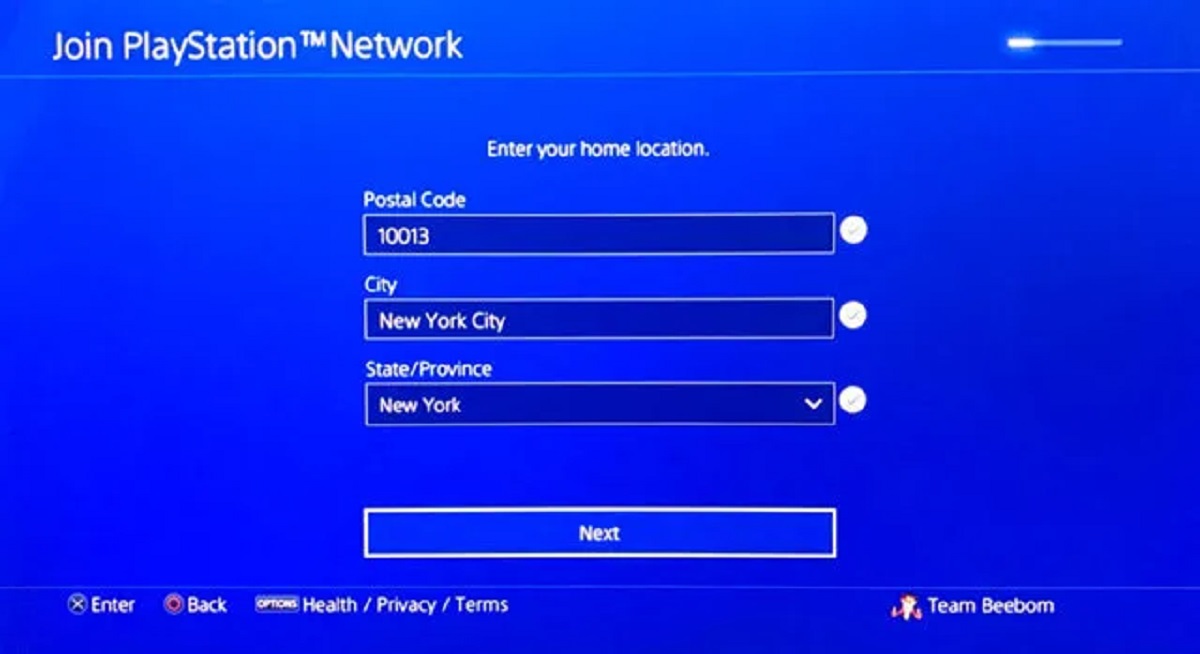Introduction
Introduction
The PlayStation is a widely popular gaming console developed and manufactured by Sony Interactive Entertainment. Since its debut in 1994, the PlayStation has revolutionized the gaming industry and has become one of the most successful and beloved gaming consoles of all time. Gamers around the world have eagerly awaited each new iteration of the PlayStation, from the original PlayStation to the more recent PlayStation 5.
Have you ever wondered where the PlayStation is made? In this article, we will delve into the history of Sony, the birth of the PlayStation, and explore the manufacturing process of this iconic gaming console. We will also discuss the factors that influence the choice of manufacturing locations and provide insights into the current manufacturing locations for the PlayStation.
Sony is a Japanese multinational conglomerate corporation that was founded in 1946 by Masaru Ibuka and Akio Morita. Originally named Tokyo Tsushin Kogyo, the company began as a manufacturer of electric rice cookers and other electrical appliances. Over time, Sony diversified its product offerings and entered various industries, including consumer electronics, gaming, entertainment, and more.
The PlayStation was first conceived in the late 1980s when Sony entered into a partnership with Nintendo to develop a CD-ROM drive for the Super Nintendo Entertainment System (SNES). However, the collaboration fell apart, leading Sony to independently develop their own gaming console.
The first PlayStation console, the PlayStation 1, was released in Japan in 1994 and achieved tremendous success. With its groundbreaking 3D graphics, innovative controller, and extensive library of games, the PlayStation quickly gained popularity and rivalled other gaming consoles in the market.
The manufacturing process of the PlayStation comprises several intricate steps. It involves the sourcing of components, assembly of the console, quality control checks, packaging, and distribution. Each step is crucial to ensure the final product meets the high-quality standards set by Sony.
The choice of manufacturing locations for the PlayStation is influenced by various factors. These include proximity to component suppliers, labor costs, infrastructure, political stability, and logistical considerations. Sony strategically selects manufacturing locations to optimize production efficiency, achieve cost-effectiveness, and reduce delivery lead times.
Currently, the PlayStation is manufactured in several locations globally, including Japan, China, and Southeast Asian countries. These manufacturing facilities work in tandem to fulfill the high demand for PlayStation consoles worldwide.
In the following sections, we will discuss each step of the manufacturing process in more detail and explore the specific manufacturing locations for the PlayStation.
History of Sony
Sony Corporation, commonly referred to as Sony, is a renowned Japanese multinational conglomerate corporation. Founded in 1946 by Masaru Ibuka and Akio Morita, the company initially operated under the name Tokyo Tsushin Kogyo. It started as a humble electrical equipment company, producing electric rice cookers and other household appliances. However, Sony quickly diversified its product offerings and expanded into various industries, including consumer electronics, gaming, entertainment, and more.
Sony’s commitment to innovation and cutting-edge technology has been a driving force behind its success. In the early 1950s, the company introduced Japan’s first tape recorder, the G-Type. This breakthrough product propelled Sony into the international market and established its reputation for delivering high-quality audio equipment.
Throughout the 1960s and 1970s, Sony continued to blaze trails in the consumer electronics industry. In 1968, the company unveiled the Trinitron color television, revolutionizing the way people experienced home entertainment. Sony’s Trinitron technology set new standards for picture quality and became a benchmark for television manufacturers worldwide.
Building on its success in the electronics sector, Sony ventured into the world of gaming in the late 1980s. The company initially partnered with Nintendo to develop a CD-ROM drive for the Super Nintendo Entertainment System (SNES). However, the collaboration fell apart, leading Sony to independently create its own gaming console.
This endeavor paved the way for the birth of the iconic PlayStation series. The first PlayStation console, officially called the PlayStation 1, was released in Japan in 1994. It quickly gained recognition for its sleek design, advanced 3D graphics capabilities, and a diverse library of games.
The release of the PlayStation marked Sony’s entry into the highly competitive gaming industry. The company’s commitment to pushing boundaries and delivering immersive gaming experiences resonated with consumers worldwide. Subsequent generations of the PlayStation, including PlayStation 2, PlayStation 3, PlayStation 4, and the recently launched PlayStation 5, have consistently captured the enthusiasm of gamers and solidified Sony’s position as a leading player in the gaming market.
Beyond gaming, Sony has also made significant contributions to the entertainment industry. The company acquired Columbia Pictures in 1989, establishing its presence in the film and television production and distribution sectors. This acquisition laid the foundation for Sony Pictures Entertainment, which has become a renowned and influential player in the entertainment industry.
Over the years, Sony has continued to innovate and diversify its product portfolio. The company has introduced a wide range of consumer electronics, including televisions, digital cameras, audio equipment, and mobile devices. Sony’s commitment to quality, reliability, and technological advancement has earned it a loyal customer base and global recognition as a pioneer in the technology sector.
Through its rich history and unwavering commitment to innovation, Sony has carved its place in the world as a leader in the consumer electronics and entertainment industries. The company’s success is rooted in its ability to leverage technology and deliver products that resonate with consumers’ desires for high-quality, immersive experiences.
Birth of PlayStation
The birth of the PlayStation can be traced back to the late 1980s when Sony entered into a partnership with Nintendo to develop a CD-ROM drive for the Super Nintendo Entertainment System (SNES). However, the collaboration eventually fell apart due to creative differences and contractual issues. This led Sony to independently pursue the creation of its own gaming console.
Under the leadership of Ken Kutaragi, a Sony engineer known as the “Father of the PlayStation”, the company began developing what would become the first PlayStation console. Kutaragi envisioned a gaming system that would harness CD-ROM technology to provide players with a more immersive and visually stunning gaming experience.
In 1994, the culmination of years of research and development led to the release of the PlayStation 1 in Japan. The console boasted several groundbreaking features that immediately captivated gamers worldwide. One of the standout features was its sleek and futuristic design, which set it apart from its competitors.
However, it was the PlayStation’s technological advancements that truly revolutionized the gaming industry. The console introduced 3D graphics, which were a significant leap forward from the 2D graphics prevalent in gaming at the time. This breakthrough allowed game developers to create more realistic and visually stunning worlds for players to explore.
Another key innovation of the PlayStation was its CD-ROM format. Unlike cartridges used by other gaming consoles at the time, CDs provided larger storage capacity, enabling game developers to include expansive worlds, intricate storylines, and immersive soundtracks.
The success of the PlayStation was further fueled by its extensive library of games. Sony entered into partnerships with various game developers, both large and small, to ensure a diverse and compelling lineup of titles. Iconic games like “Final Fantasy VII,” “Gran Turismo,” and “Tekken” became synonymous with the PlayStation and played a crucial role in attracting a loyal fan base.
The release of the PlayStation was met with overwhelming demand, and Sony struggled to keep up with production. Gamers around the world eagerly awaited the console’s international release, and it quickly became a global phenomenon. The PlayStation became a household name, symbolizing the rapid growth of the gaming industry and the emergence of a new era of gaming.
Building on the success of the original PlayStation, Sony continued to release subsequent generations of the console, each with its own technological advancements and improvements. The PlayStation 2, released in 2000, became the best-selling console of all time, solidifying Sony’s dominance in the gaming market.
The birth of the PlayStation was a pivotal moment in the gaming industry. It showcased Sony’s ability to merge cutting-edge technology, innovative design, and captivating gaming experiences into a single product. The success of the PlayStation not only propelled Sony to the forefront of the gaming industry but also forever changed the way people interacted with video games.
Manufacturing Process of PlayStation
The manufacturing process of the PlayStation involves several intricate steps to ensure the production of high-quality gaming consoles. From sourcing components to assembly and quality control, each stage plays a crucial role in delivering a product that meets Sony’s standards and exceeds the expectations of gamers globally.
1. Component Sourcing: The first step in the manufacturing process is sourcing the various components required for the PlayStation. These components include the motherboard, processors, memory, storage drives, power supply, and controllers. Sony collaborates with a network of suppliers and manufacturers worldwide to acquire these components.
2. Assembly: Once the components are sourced, the assembly process begins. The assembly involves integrating the different parts and components onto the motherboard and creating the hardware infrastructure that powers the PlayStation. Automated machinery and skilled technicians work together to meticulously assemble the consoles.
3. Quality Control: Quality control is a vital step in the manufacturing process. Each PlayStation undergoes rigorous testing to ensure that it meets Sony’s stringent quality standards. This includes functional testing to check the console’s performance, stress testing to assess its durability, and visual inspections to identify any cosmetic defects.
4. Firmware Installation: After passing the quality control tests, the consoles go through the firmware installation process. Firmware is the software that controls the operation of the PlayStation. It includes the operating system, essential drivers, and firmware updates. The installation process ensures that the console is equipped with the latest firmware version.
5. Packaging and Distribution: Once the consoles have been assembled, tested, and had their firmware installed, they are ready for packaging. Each PlayStation is carefully packaged with accessories such as controllers, cables, and instruction manuals. The packaging is designed to protect the console during transit and provide an appealing presentation to the customers. The packaged consoles are then distributed to retailers and distributors worldwide.
The manufacturing process of the PlayStation demands precision, attention to detail, and adherence to strict quality control measures. Sony’s commitment to deliver a superior gaming experience is reflected in each stage of the process, from component sourcing to packaging and distribution.
Continuous improvement and innovation play a pivotal role in the manufacturing process. Sony constantly seeks ways to enhance efficiency, reduce manufacturing costs, and implement eco-friendly practices. By leveraging advancements in technology and streamlining operations, Sony strives to meet the ever-increasing demand for PlayStation consoles while maintaining the highest standards of quality and customer satisfaction.
PlayStation Production Locations
The production of PlayStation consoles takes place in various locations around the world to meet the global demand. Sony strategically selects manufacturing locations based on factors such as proximity to component suppliers, production costs, infrastructure, political stability, and logistical considerations. Let’s explore some of the key production locations for PlayStation consoles.
1. Japan: As the birthplace of Sony and the PlayStation, Japan has historically been a significant production location for PlayStation consoles. Many of the key components and technologies used in PlayStation consoles are sourced and manufactured in Japan. The country’s advanced infrastructure and skilled labor force contribute to the efficient production of high-quality devices.
2. China: China has emerged as a major manufacturing hub for consumer electronics, including gaming consoles. Sony has established production facilities in various regions of China to take advantage of the country’s vast manufacturing capabilities, cost-effectiveness, and well-developed supply chain infrastructure. This enables Sony to meet the high demand for PlayStation consoles in a timely manner.
3. Southeast Asia: Countries in Southeast Asia, such as Thailand, Malaysia, and the Philippines, have also become important production locations for PlayStation consoles. These countries offer competitive labor costs, favorable business environments, and well-established infrastructure for manufacturing operations. Sony leverages the strengths of these nations to optimize production efficiency and streamline the supply chain.
4. Other Global Locations: In addition to Japan, China, and Southeast Asia, Sony has established production facilities in other countries across the globe. These locations provide regional production capabilities to meet specific market demands and ensure timely delivery of PlayStation consoles to customers around the world.
It’s important to note that the choice of production locations may vary based on factors such as market trends, production volume, and regional distribution requirements. Sony continually evaluates its production strategies to adapt to changing market dynamics and optimize the supply chain.
By selecting production locations strategically, Sony not only ensures efficient manufacturing processes but also creates employment opportunities in various regions. The localization of production facilities also helps Sony navigate any potential disruptions in the global supply chain, ensuring a steady supply of PlayStation consoles to satisfy the ever-growing demand from gamers.
As the gaming industry continues to evolve and expand, Sony will likely continue to explore new production locations to enhance its manufacturing capabilities and cater to the diverse needs of its global customer base. The production locations will play a crucial role in the successful delivery of PlayStation consoles, reinforcing Sony’s commitment to quality, efficiency, and customer satisfaction.
PlayStation Assembly Process
The assembly process of PlayStation consoles involves a series of intricate steps to ensure the production of high-quality devices. From the integration of components to the final testing and packaging, each stage of the assembly process is crucial in delivering a flawless gaming console that meets Sony’s standards and exceeds customer expectations.
1. Component Integration: The assembly process begins with the integration of various key components that make up the PlayStation console. These components include the motherboard, processors, memory modules, storage drives, power supply unit, cooling system, and other hardware. Skilled technicians, aided by specialized machinery, carefully assemble and connect these components to create the core infrastructure of the console.
2. Firmware Installation: Once the physical components are integrated, the next step is to install the firmware. Firmware refers to the software that controls the operation of the PlayStation console. It includes the console’s operating system, firmware updates, and essential drivers. The latest firmware version is installed to ensure optimal performance and compatibility with games and applications.
3. Quality Control Checks: Quality control is a critical aspect of the assembly process. Each PlayStation console undergoes comprehensive testing to ensure that it meets Sony’s stringent quality standards. Skilled technicians and automated testing equipment assess various aspects, including functionality, performance, image quality, audio output, connectivity, and controller responsiveness. Any issues or defects identified during the testing phase are addressed and rectified before proceeding to the next stage.
4. Final Assembly and Inspection: After passing quality control checks, the PlayStation consoles go through final assembly. This includes attaching accessories such as controllers, cables, and documentation to the console. Attention to detail is crucial at this stage to ensure that all components are securely attached and ready for customer use. The consoles then undergo a final inspection to verify that they meet the specified quality standards.
5. Packaging and Labeling: Once the consoles have been assembled, inspected, and passed all quality control checks, they are prepared for packaging. Each console, along with its accompanying accessories, is carefully placed in its packaging. The packaging is designed to safeguard the console during shipping while providing a visually appealing presentation to customers. Labels and barcodes are applied to facilitate inventory management and streamline the distribution process.
6. Shipping and Distribution: The final step in the assembly process involves shipping the packaged PlayStation consoles to distribution centers and retailers worldwide. These logistics operations are carefully planned to ensure that the consoles reach their destinations on time and in perfect condition. Sony works closely with shipping partners to guarantee secure and efficient transportation.
The PlayStation assembly process demands precision, attention to detail, and adherence to strict quality control measures. Sony’s commitment to delivering a superior gaming experience is reflected in each stage of the assembly process. A combination of skilled technicians, automated machinery, and rigorous quality control checks ensures that every PlayStation console that leaves the assembly line meets the highest standards of quality and performance.
By focusing on assembly efficiency, quality assurance, and continuous improvement in processes, Sony strives to meet the increasing demand for PlayStation consoles while maintaining its reputation for excellence. Through well-executed assembly procedures, Sony delivers a gaming console that captivates players worldwide and ensures their satisfaction with the PlayStation experience.
Factors Influencing Manufacturing Locations
When it comes to selecting manufacturing locations for PlayStation consoles, several key factors influence Sony’s decision-making process. These factors play a crucial role in determining the efficiency, cost-effectiveness, and overall success of the manufacturing operations. Let’s explore some of the factors that influence the choice of manufacturing locations for PlayStation consoles.
1. Proximity to Component Suppliers: The availability and proximity of component suppliers have a significant impact on manufacturing decisions. Choosing locations close to suppliers reduces transportation costs and minimizes lead times, ensuring a steady supply of high-quality components for PlayStation consoles. This proximity helps streamline the supply chain and minimizes potential disruptions in production.
2. Production Costs: Manufacturing costs, including labor, infrastructure, and operational expenses, are essential considerations. Lower production costs can be advantageous, enabling Sony to optimize its manufacturing budget and offer competitive pricing. However, it is crucial to balance cost-effectiveness with quality and efficiency to maintain the high standards expected from PlayStation consoles.
3. Skilled Labor Force: Access to a skilled labor force is a critical factor in the manufacturing process. Locations with an abundance of skilled workers, experienced technicians, and engineers can enhance efficiency and productivity. A well-trained workforce can effectively handle assembly processes, quality control checks, and troubleshooting, contributing to the production of high-quality PlayStation consoles.
4. Infrastructure: Infrastructure, including transportation, logistics, and utilities, is essential for smooth manufacturing operations. Well-developed infrastructure enables efficient movement of goods and reduces logistical challenges. Reliable power supply, communication networks, and transportation links ensure uninterrupted manufacturing processes and timely delivery of PlayStation consoles to customers worldwide.
5. Political Stability: Political stability and a favorable business environment are vital factors for manufacturing location decisions. Stability reduces the risk of disruptions caused by political instability, labor strikes, or policy changes. Operating in a stable environment allows Sony to maintain a consistent manufacturing process and meet production targets without significant interruptions.
6. Logistical Considerations: Logistical considerations play a crucial role in selecting manufacturing locations. Accessibility to transportation networks, distribution centers, and major markets can optimize the flow of PlayStation consoles from the manufacturing facility to customers. Strategic location selection helps minimize transportation costs, improve delivery times, and ensure efficient supply chain management.
Each of these factors must be carefully evaluated and balanced to determine the most suitable manufacturing locations for PlayStation consoles. While some factors, such as component sourcing and labor availability, may favor certain regions, others, such as production costs and political stability, require comprehensive analysis to make informed decisions.
Sony continually evaluates these factors and adapts its manufacturing strategies to address changing market dynamics and customer preferences. By considering these factors, Sony aims to optimize production efficiency, maintain high-quality standards, and meet the growing demand for PlayStation consoles.
Current PlayStation Manufacturing Locations
PlayStation consoles are currently manufactured in several locations around the world to meet the global demand. Sony strategically distributes its manufacturing operations across different regions, taking advantage of various benefits offered by each location. Let’s explore some of the current PlayStation manufacturing locations.
1. Japan: As the birthplace of Sony and the PlayStation, Japan continues to play a significant role in the manufacturing of PlayStation consoles. The country hosts several production facilities that handle various aspects of the manufacturing process, including component sourcing, assembly, quality control, and packaging. Japan’s advanced technology infrastructure and skilled labor force contribute to the seamless production of high-quality PlayStation consoles.
2. China: China has emerged as a major manufacturing hub for consumer electronics, including gaming consoles. Sony has established production facilities in different regions of China, leveraging the country’s manufacturing expertise, cost-effectiveness, and well-developed supply chain infrastructure. These facilities contribute to meeting the high demand for PlayStation consoles worldwide.
3. Southeast Asia: Southeast Asian countries such as Thailand, Malaysia, and the Philippines have become important production locations for PlayStation consoles. These countries offer competitive labor costs, favorable business environments, and well-established infrastructure for manufacturing operations. Sony takes advantage of the skilled workforce and economic benefits provided by these nations to optimize production efficiency.
4. Other Global Locations: In addition to Japan, China, and Southeast Asia, Sony has established manufacturing facilities in other regions worldwide. These locations cater to specific market demands and provide regional production capabilities. By diversifying manufacturing locations, Sony can optimize production efficiency, reduce shipping lead times, and ensure timely delivery of PlayStation consoles to customers.
It’s important to note that the selection of manufacturing locations can evolve over time based on various factors, including market dynamics, regional demand, and supply chain considerations. Sony continuously assesses its manufacturing strategies to adapt to changing market conditions and enhance efficiency.
By distributing manufacturing locations globally, Sony not only ensures efficient production processes but also contributes to regional economic development and job creation. The localized production also helps Sony navigate any potential disruptions in the global supply chain, minimizing the impact on the availability of PlayStation consoles for customers.
As the gaming industry evolves and global demand for PlayStation consoles continues to grow, Sony may explore new manufacturing locations or expand existing facilities to meet the needs of its diverse customer base. The current PlayStation manufacturing locations exemplify Sony’s commitment to delivering high-quality gaming consoles while optimizing production efficiency to keep up with the demands of the ever-growing gaming market.
Conclusion
The PlayStation has not only transformed the gaming industry but has also become a cultural phenomenon, captivating gamers worldwide. Understanding the manufacturing process and locations for this iconic gaming console provides valuable insights into Sony’s commitment to delivering high-quality gaming experiences to its customers.
Throughout its history, Sony has continuously pushed boundaries and leveraged cutting-edge technology to create innovative gaming consoles. The birth of the PlayStation marked a turning point, introducing 3D graphics and CD-ROM technology that revolutionized the gaming industry. The PlayStation’s success can be attributed to its strong foundations in quality, design, and immersive gameplay experiences.
The manufacturing process of PlayStation consoles involves a meticulous assembly process, where skilled technicians integrate components and perform rigorous quality control checks to ensure the final product meets Sony’s high standards. The choice of manufacturing locations is influenced by factors such as component sourcing, production costs, skilled labor availability, infrastructure, and logistical considerations.
Currently, PlayStation consoles are manufactured in multiple locations worldwide, including Japan, China, and Southeast Asian countries. Sony strategically selects these locations to optimize production efficiency, reduce costs, and meet the global demand for its gaming consoles. Continuous evaluation and adaptation of manufacturing strategies allow Sony to stay responsive to market dynamics and customer expectations.
Production locations play a vital role in ensuring the efficient manufacturing and timely delivery of PlayStation consoles. By diversifying manufacturing facilities globally, Sony minimizes supply chain disruptions and fosters regional economic development.
In conclusion, Sony’s dedication to delivering high-quality gaming experiences is evident in every aspect of the PlayStation’s creation, from the birth of the console to the meticulous manufacturing process. The PlayStation’s success is a testament to Sony’s craftsmanship, innovation, and commitment to meeting the demands of gamers worldwide.







